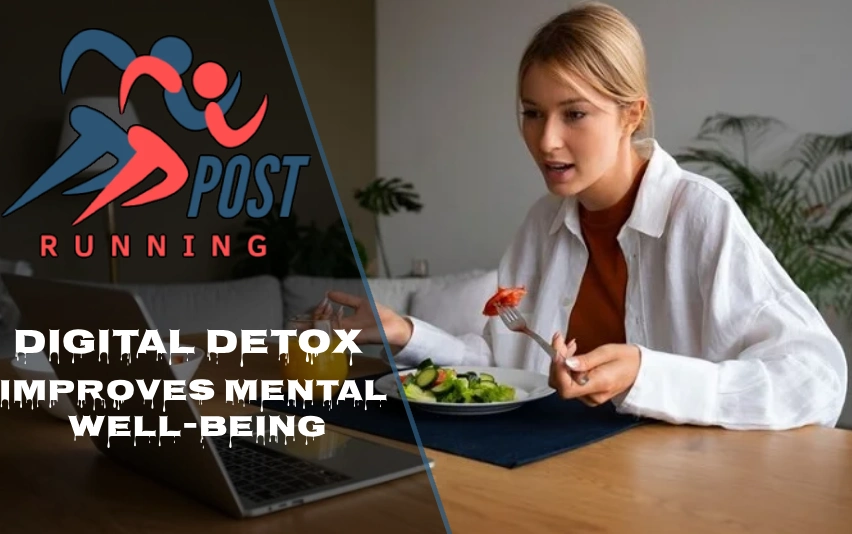In our hyper-connected world, the concept of a digital detox has gained significant traction as a powerful tool for improving mental well-being. By intentionally reducing or abstaining from digital device usage, particularly social media and non-essential screen time, individuals can experience a range of benefits that positively impact their mental health. This article explores how digital detox improves mental well-being, offering insights into its implementation and long-term effects.
Introduction
We’re living in an age where our smartphones, tablets, and computers are practically extensions of ourselves. While these devices offer incredible convenience and connectivity, they also come with a hidden cost to our mental health. That’s where digital detox comes in. It’s a simple yet effective way to hit the reset button on our relationship with technology and give our minds a much-needed break.
What is a Digital Detox?
A digital detox is like a vacation for your brain from the constant barrage of notifications, emails, and social media updates. It involves taking a deliberate break from electronic devices, social media apps, and internet usage for a specific period. This break can be as short as a few hours or as long as several weeks, depending on your goals and comfort level.
Think of it as decluttering your digital life. Just as you might clean out your closet or organize your desk, a digital detox helps you clear out the mental clutter that accumulates from constant connectivity. It’s not about completely abandoning technology, but rather about creating a healthier balance between your online and offline life.
Benefits of Digital Detox
Reduced Stress and Anxiety
One of the most significant ways how digital detox improves mental well-being is by reducing stress and anxiety levels. Constantly being plugged in can create a sense of information overload and a nagging feeling that you’re always missing out on something. By stepping away from screens, you give yourself a chance to escape this digital noise and find some peace.
Studies have shown that digital detoxes can lead to decreased anxiety levels, as measured by GAD-7 scores. Participants often report feeling more relaxed and less overwhelmed after taking a break from their devices. It’s like giving your mind a chance to catch its breath and reset.
Improved Sleep Quality
If you’ve ever found yourself scrolling through your phone late at night, you’re not alone. But this habit can wreak havoc on your sleep patterns. The blue light emitted by screens can interfere with your body’s natural sleep-wake cycle, making it harder to fall asleep and reducing the quality of your rest.
A digital detox, especially in the hours leading up to bedtime, can significantly improve sleep quality. Research has shown improved PSQI (Pittsburgh Sleep Quality Index) scores among those who reduce their screen time before bed. Better sleep doesn’t just mean feeling more refreshed in the morning; it also contributes to better overall mental health and cognitive function.
Enhanced Focus and Productivity
In our multi-tasking, always-connected world, our attention spans have taken a hit. We’re constantly switching between apps, responding to messages, and checking notifications. This digital juggling act can leave us feeling scattered and unproductive.
A digital detox can help sharpen your focus and boost productivity. By removing the constant distractions of digital devices, you give your brain the opportunity to concentrate on one task at a time. Many participants in digital detox studies report feeling less distracted and more capable of diving deep into tasks, whether it’s work-related projects or personal hobbies.
Better Mental Health
Perhaps the most compelling argument for how digital detox improves mental well-being is its positive impact on overall mental health. Studies have shown significant reductions in depressive symptoms among individuals who undertake a digital detox. Moreover, participants often report increased life satisfaction and a greater sense of overall well-being.
This improvement in mental health isn’t just about removing negative influences. It’s also about creating space for positive experiences and connections. When you’re not constantly tied to your devices, you have more opportunities for face-to-face interactions, outdoor activities, and pursuing hobbies that bring you joy.
How to Implement a Digital Detox
Now that we’ve explored how digital detox improves mental well-being, you might be wondering how to get started. Here are some practical steps to implement a digital detox in your life:
- Set specific time limits for device usage: Start small by designating certain hours of the day as “device-free” time. This could be the first hour after waking up or the last hour before bed.
- Create device-free zones or periods in your daily routine: Establish areas in your home where devices are not allowed, such as the dining table or bedroom. This helps create boundaries between your digital and physical worlds.
- Replace digital activities with offline alternatives: Instead of scrolling through social media, pick up a book, go for a walk, or engage in a hobby. The key is to find activities that you enjoy and that don’t involve screens.
- Practice mindful usage of digital devices: When you do use your devices, be intentional about it. Ask yourself if you really need to check your phone or if you’re just doing it out of habit.
Remember, the goal isn’t to completely eliminate technology from your life, but to create a healthier relationship with it. Start with small changes and gradually increase the duration and frequency of your digital detox periods as you become more comfortable.
Challenges and Adaptations
It’s important to acknowledge that implementing a digital detox isn’t always easy. Many people experience initial discomfort and feelings of disconnection when they first reduce their device usage. You might feel anxious about missing important messages or experience FOMO (fear of missing out) on social media updates.
Some individuals may also experience increased boredom initially. We’ve become so accustomed to constant stimulation from our devices that sitting with our own thoughts can feel uncomfortable at first.
However, most participants adapt to limited internet access over time. The key is to push through the initial discomfort and give yourself time to adjust. Many people find that after a few days, they start to appreciate the peace and clarity that comes with reduced digital noise.
Long-term Effects
The benefits of a digital detox don’t disappear as soon as you pick up your phone again. Studies have shown sustained benefits in mental health and reduced digital media usage even after the detox period ends. Many participants develop an increased awareness of their online behavior, leading to more mindful and intentional use of digital devices in the long term.
This lasting impact is one of the most powerful aspects of how digital detox improves mental well-being. It’s not just a temporary fix, but a way to reshape your relationship with technology for the better.
Conclusion
In conclusion, the evidence is clear: digital detox can significantly improve mental well-being. From reduced stress and anxiety to better sleep, enhanced focus, and overall improved mental health, the benefits are numerous and impactful.
While implementing a digital detox may come with initial challenges, the long-term effects make it a worthwhile endeavor. By creating a healthier balance between our online and offline lives, we can harness the benefits of technology while protecting our mental health.
In our increasingly digital world, taking regular breaks from our devices isn’t just a luxury—it’s a necessity for maintaining good mental health. So why not give it a try? Your mind will thank you for it.
Discover more fascinating insights—explore Running Posts Today.















